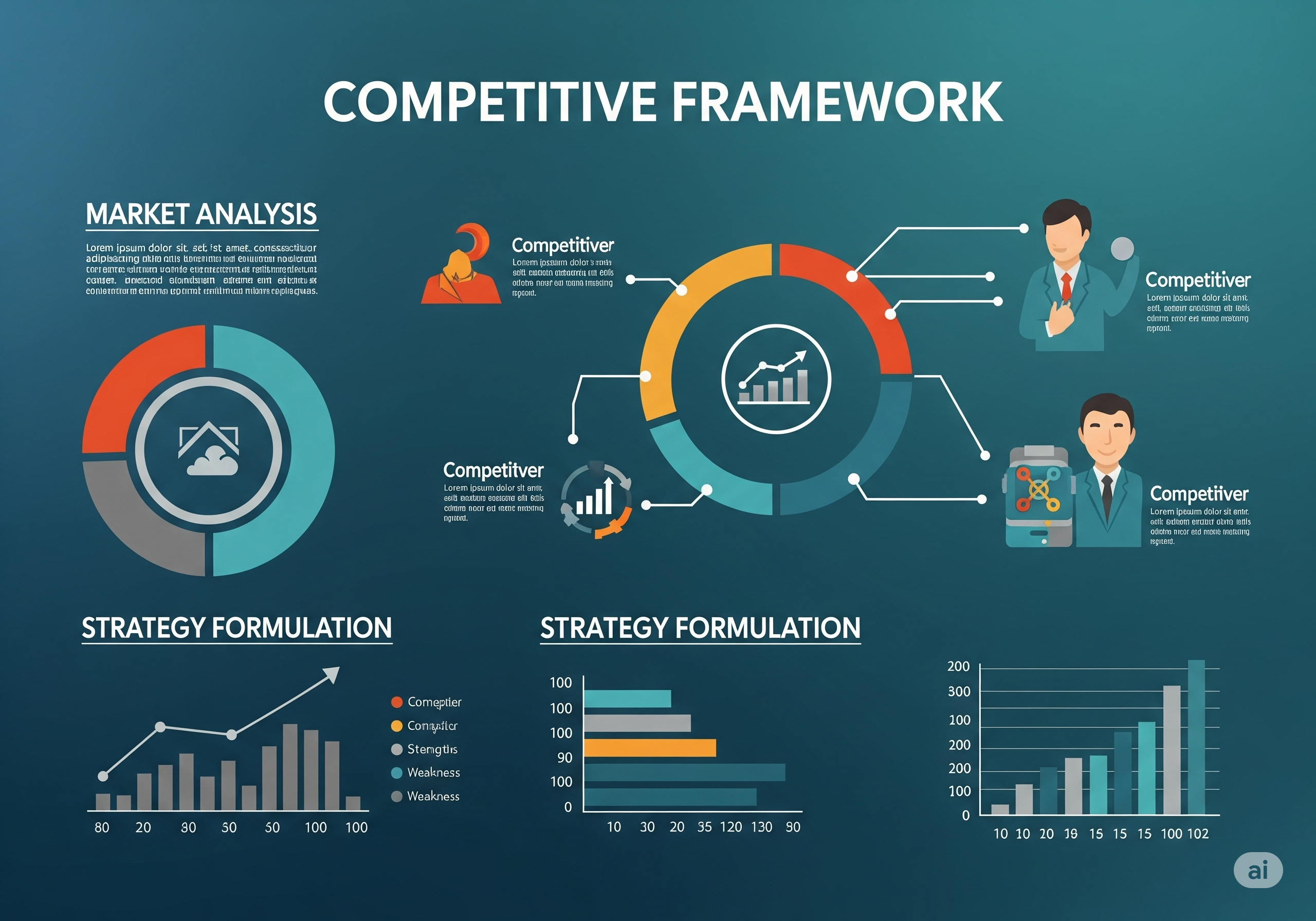Introduction
Competition monitoring through web scraping involves systematically collecting and analyzing data from various online sources to gain insights into the strategies, activities, and performance of competitors. Web scraping for competition monitoring is a dynamic process that requires a strategic approach, ongoing adjustments, and a commitment to ethical data practices. When done effectively, it can provide businesses with valuable intelligence to make informed decisions and maintain a competitive edge in the market.

What is Competitive Intelligence Framework (CIF)?
Competitive intelligence is the process of gathering, analyzing, and using information about the competitive environment in which a business operates. The goal of competitive intelligence is to provide businesses with valuable insights into the actions, strategies, strengths, and weaknesses of their competitors. This information helps organizations make informed decisions, identify opportunities, and mitigate potential threats in the marketplace.
Gaining insights through competitive intelligence allows you to understand the intricacies of your competitors' operations and pinpoint potential areas where you can surpass them. This approach not only keeps you informed about industry trends but also ensures that your product consistently meets, and even surpasses, industry standards.
Competitive Intelligence Framework
A Competitive Intelligence framework is a structured approach that organizations use to systematically gather, analyze, and utilize information about their competitive environment. A well-defined CIF helps businesses make informed decisions, identify opportunities, and stay ahead in their industry. Here's a detailed look at CrawlSight's framework for Competitive Intelligence:
- Web Data Extractors: CrawlSight employs advanced web data extractors built using technologies like Python's Scrapy and BeautifulSoup, which are optimized for handling complex web structures and large-scale data extraction. These extractors are designed to navigate and parse HTML pages efficiently, handle JavaScript-rendered content, and overcome challenges like CAPTCHA and anti-scraping measures.
- Data Lake: CrawlSight's data lake uses scalable storage solutions such as AWS S3 or Google Cloud Storage to accommodate vast amounts of raw, unstructured data. This data lake facilitates efficient storage and retrieval of data and supports various formats, including JSON, XML, and CSV.
- Data Processing: The data processing engine employs technologies like Apache Spark or Apache Flink for distributed data processing and transformation. It handles tasks such as data cleansing, normalization, aggregation, and summarization.
- AI/ML: Artificial Intelligence (AI) and Machine Learning (ML) are integral to enhancing the capabilities of competition monitoring. AI/ML models are used for improved data extraction, content classification, predictive analytics, anomaly detection, and sentiment analysis.
- Analytics: A centralized analytics dashboard, built using tools like Tableau or Power BI, provides a comprehensive view of the collected data. This dashboard includes features such as interactive visualizations, customizable reports, and integration with other business intelligence tools.

Use Case
Data-Driven Dynamics: Elevating Profit Margins with Scraped Pricing Data
In the dynamic and fiercely competitive landscape of today's business world, enterprises are perpetually in search of avenues to boost their profitability. A particularly potent approach involves the adoption of data-driven pricing strategies. By leveraging data and analytics to guide their pricing decisions, companies can ascertain that they offer their products and services at a rate not only sufficient to cover costs but also to secure a robust profit margin.
This involves keeping tabs on product prices, promotional activities, and other pertinent details. By staying well-informed about the strategies employed by competitors, businesses can make informed decisions to maintain a competitive edge.
Industry Benefits of Competitive Analysis
Competitive analysis through web scraping and CIF provides significant advantages across various industries. Here's how e-commerce and other sectors benefit from these insights:
- E-Commerce: Dynamic pricing strategies help online retailers adjust prices in real-time based on competitor analysis, leading to improved profit margins and market positioning. Inventory management insights enable better stock planning and demand forecasting.
- Retail: Understanding promotional strategies and marketing campaigns of competitors allows retailers to optimize their own campaigns and identify market opportunities for better customer engagement.
- Financial Services: Market trend analysis provides valuable insights into industry movements, while regulatory compliance monitoring ensures adherence to industry standards and identifies potential risks.
- Healthcare: Competitive analysis supports product development by identifying market gaps and helps in strategic market positioning for pharmaceutical and medical device companies.
By leveraging competitive analysis, businesses in various sectors can gain a deeper understanding of their market environment, enhance their strategic planning, and achieve a competitive advantage. This data-driven approach enables companies to make informed decisions, respond quickly to market changes, and maintain their edge in increasingly competitive markets.



